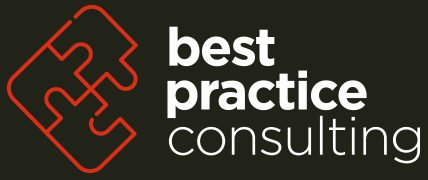Why is it so hard to tell our employees that they’re doing something that’s not working, and needs to change?
Fear of others’ reactions, saying the wrong thing or being labelled a “bully” are common reasons why managers are reluctant to give feedback. Such fears combined with differences in personality and work styles, perspectives and cultural backgrounds can lead to uncomfortable and unproductive feedback situations. In fact, in an extensive literature review Denisi and Kluger (2000) found that in more than one-third of cases, performance feedback actually resulted in decreased performance across the 131 studies analysed.
Despite these challenges, helping employees improve job performance on an ongoing basis is a key responsibility of successful managers. When feedback is delivered well, the benefits are significant not only for the employee, but for the manager and the organisation. So, it’s important to get it right. The following tips will help you deliver feedback more effectively in the workplace.
1.Get the focus right
The feedback you deliver at work should focus on:
a) Job performance and actions. This concerns competency, that is, whether or not the person is capably performing specific tasks assigned.
b) Observable work behaviours. This concerns the way in which tasks are performed, for example, whether the person arrives on time, works cooperatively or speaks courteously and respectfully to others.
Feedback that falls outside these categories, such as statements about someone’s attitude or personal characteristics, can lead to negative outcomes for both parties.
2.Follow a few simple feedback tips
Tip 1 - Create the right environment. Feedback is best delivered in person and in a private setting.
Tip 2 - Provide constructive feedback. Feedback conversations should benefit the recipient, not allow you to vent your frustrations. If you can't think of a constructive purpose for giving feedback, don't give it. Make sure there is a dialogue and not a monologue. Ensure the recipient leaves the conversation knowing exactly what action to take next.
Tip 3 - Deliver feedback in a timely way. Give feedback as soon after the event as possible. This prevents bottling up of bad feelings about the person’s performance. It also flags the issue or problem at the time it occurs, when the details are fresh in everyone’s minds.
Tip 4 - Talk about feedback in specific terms. Be factual in your discussion and cite specific examples or instances. For example: “I noticed there were several calculation errors in last month’s report”. Focus on the action and the impact.
Tip 5 - Focus on description rather than judgement. Describing behaviour is a way of reporting what has occurred, while judging behaviour is an evaluation of what has occurred in terms of "right or wrong", or "good or bad". By avoiding evaluative language, you reduce the need for the individual to respond defensively.
Tip 6 - Offer suggestions for improvement. If the objective of your feedback discussion is to improve performance, then come equipped with specific suggestions on what the person can do to affect that change. Engage them in coming up with solutions that they can buy into, by asking questions and seeking their thoughts and ideas. If you don’t get buy-in, change will not happen.
3.Follow the steps to effectively deliver the feedback
Step 1 – Be clear about the purpose of your feedback. Indicate what you'd like to cover and why it's important. This focused statement keeps the other person from having to guess what you want to talk about. For example: "I have a concern about…" or "I feel I need to let you know…"
Step 2 – Describe specifically what you have observed. Say when and where it happened, who was involved, and what the results were. Stick to what you personally observed and don't try to speak for others. Avoid talking vaguely about what the person "always" or "usually" does. For example: "Yesterday afternoon, when you were speaking with Sally, I noticed that you kept raising your voice."
Step 3 – Describe your reactions. Give examples of how you and others are affected. When you describe your reactions or the consequences of the observed behaviours, the other person can better appreciate the impact their actions are having on others and on the organisation or team as a whole. For example: "Sally looked embarrassed and I felt uncomfortable about seeing the episode. Shouting at our people is not acceptable behaviour in this department."
Step 4 – Give the other person an opportunity to respond. Indicate that you are waiting for an answer. Remain silent to allow them to answer. For example: "What is your view of this situation?" "What is your reaction to this?" “Tell me, what are your thoughts?"
Step 5 – Offer specific suggestions. Whenever possible make your suggestions helpful. Offering suggestions shows that you have thought past your evaluations and moved to how to improve the situation. Even if people are working up to expected standards, they often benefit from ideas that could help them to perform better. For example: "Jill, rather than telling Ed that you're not interested in all the details, you might try asking him specific questions about the information you are most interested in.”
Step 6 – Summarise and express your support. Review the major points you discussed. Summarise the action items, not the negative points of the other person's behaviour. This summary is an opportunity to show your support for the other person - a way to conclude a possibly negative feedback situation on a positive note. For example: "At least we understand each other better since we've talked. I'll do what I can to make sure your priorities are factored into the schedule, and I'll expect you to come straight to me if the schedule is a problem.”
While it may seem like an added, challenging responsibility to a manager’s already "full plate", managers who provide ongoing and effective feedback against established goals and objectives are actually making their job easier. So, it’s worth investing the time and effort to get it right.
We offer two 90-minute Bite Size Learning courses and bespoke training on feedback.
If you or your team are grappling with giving effective feedback or you'd like a fresh perspective about how to help your team move forward, contact Best Practice Consulting today.

